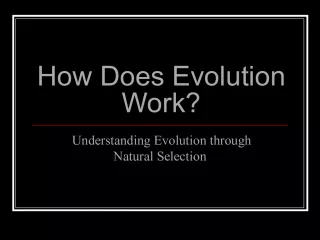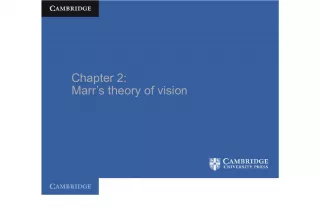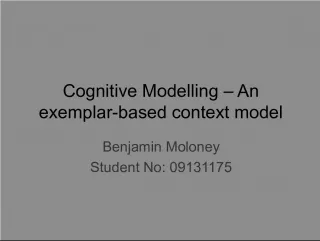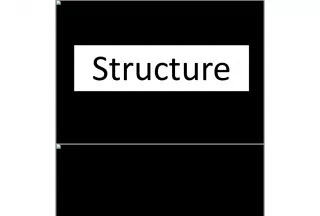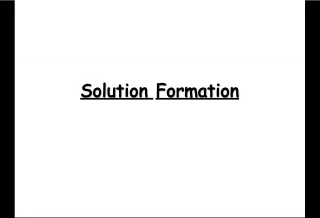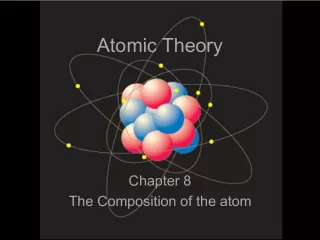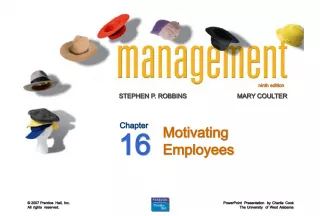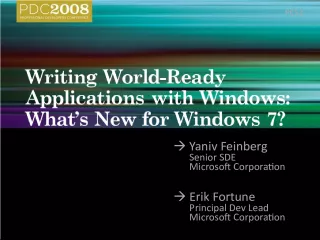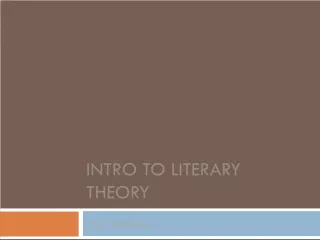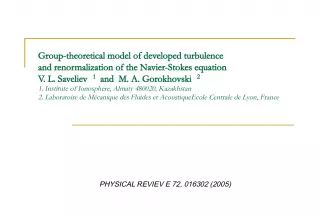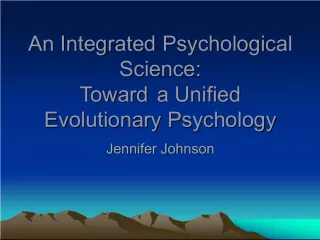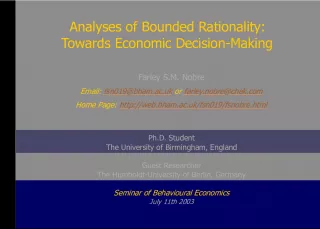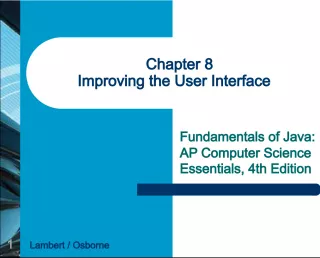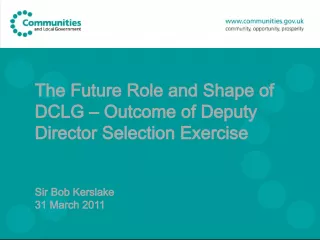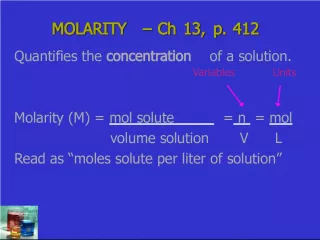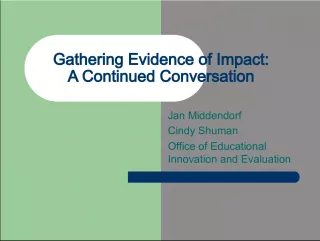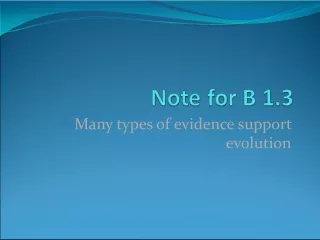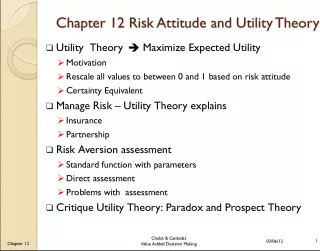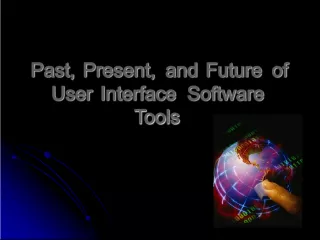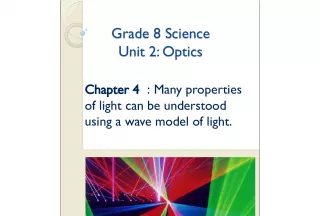Solution Selection Model with Lazy User Theory
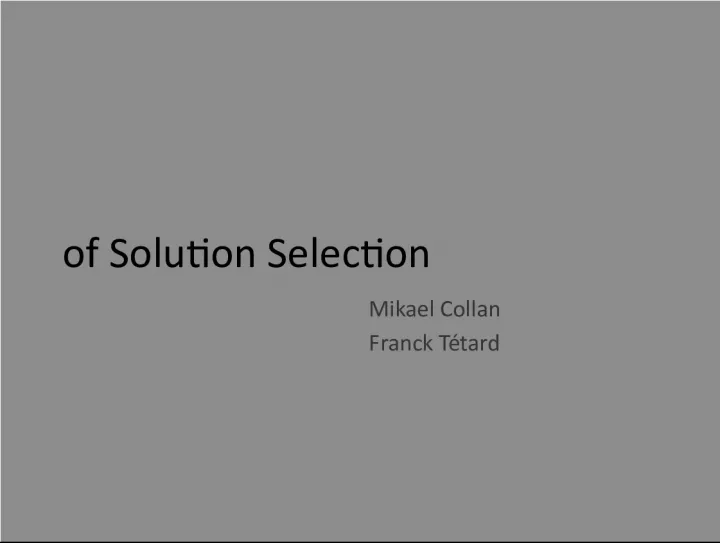

This presentation introduces a new model for solution selection which focuses on the user and learning issues. The Lazy User Theory and its relationship with technology adoption models are explored, with a specific case study on mobile ticketing services. The presentation concludes with insights and recommendations for improving technology adoption. Presented by Mikael Collan at IADIS CELDA 2007 in Algarve, Portugal.
- Uploaded on | 0 Views
-
 marleigh
marleigh
About Solution Selection Model with Lazy User Theory
PowerPoint presentation about 'Solution Selection Model with Lazy User Theory'. This presentation describes the topic on This presentation introduces a new model for solution selection which focuses on the user and learning issues. The Lazy User Theory and its relationship with technology adoption models are explored, with a specific case study on mobile ticketing services. The presentation concludes with insights and recommendations for improving technology adoption. Presented by Mikael Collan at IADIS CELDA 2007 in Algarve, Portugal.. The key topics included in this slideshow are solution selection, Lazy User Theory, technology adoption, mobile services, learning issues,. Download this presentation absolutely free.
Presentation Transcript
1. of Solution Selection Mikael Collan Franck Ttard
2. This presentation Background to this research The focus of the model Lazy User Theory Case mTicket Learning issues Relationship with some models explaining technology adoption Conclusions Mikael Collan IADIS CELDA 2007 Algarve, Portugal 2
3. Background The model started from long discussions into why technology adoption models are mostly based on technology and not the user that adopts the technology And another set of long discussions into what part does learning play in the selection of which solution to use And a third discussion into why mobile services have not really taken off Mikael Collan IADIS CELDA 2007 Algarve, Portugal 3
4. Focus areas of the theory Focus on the user need and user characteristics, not only on the technology characteristics Focus on the effort needed from the user (in , , $; time; activity) Focus on putting many solutions on the same line (e.g., competing technologies ) Focus on effect of learning to the effort needed The theory tries to explain selection of solutions technology adoption Usable in understanding the chances of market penetration of new products & in the design of new products (solutions) Now limited to solutions that fulfill one need 100% Mikael Collan IADIS CELDA 2007 Algarve, Portugal 4
5. The Lazy User Theory of Solution Selection Mikael Collan IADIS CELDA 2007 Algarve, Portugal 5 User need User state defines limits User selection of solution based on the lowest level of effort (cost) likelihood to select solution Circumstances: Location, available resources, available devices, available time, personal characteristics... Explicitly specifiable want that can be (completely) fulfilled. The need can be tangible or intangible, e.g., information : type of information, depth of information, Quality of information, completeness of information, urgency of information delivery Set of possible solutions to fulfill the need S o l u t i o n 1 S o l u t i o n 2 S o l u t i o n 3 S o l u t i o n 4 S o l u t i o n 5 S o l u t i o n 6 USER FOCUS COMPETING SOLUTIONS (TECHNOLOGY) COST (UTILITY)
6. Case: mTicket Mikael Collan IADIS CELDA 2007 Algarve, Portugal 6 Need a ticket for the tram in Helsinki User state Set of possible solutions to fulfill the need defines limits User selection of solution based on the lowest level of effort (cost) User Need B u y f r o m t h e t r a m B u y f r o m a k i o s k B u y f r o m a t i c k e t v e n d i n g m a c h i n e m T i c k e t In hurry, no cash In hurry, with cash mTicket selected because only solution mTicket likely selected if there is waiting time no hurry, with cash In Helsinki the ticket is 10% cheaper if bought with a mobile phone, or from a vending machine, than if bought from the tram
7. A newer less costly solution enters the market Solution selection Mikael Collan IADIS CELDA 2007 Algarve, Portugal 7 $, Time, Effort User has selected a solution (technology) A new level reached through learning (becoming an expert user): It has a combination of cost level & likelihood that users choose the solution Cost (in effort/time) becomes lower due to expertise in use , this makes the likelihood to use the solution higher The cost of learning is a sunk cost and it has caused for this user a lasting change in the cost level of the solution AND a higher likelihood that this particular solution is chosen by this user in the future Learning takes place (user learns the system) Because of the sunk cost in learning the user will not be more likely to adopt the new lower cost solution At least if it does not offer a lower level of cost than where the user is now The original solution What about a new inexperienced user? Which solution will he/she be more likely to choose? The newer solution, because it offers a lower cost level What is a universal solution? Its a solution that offers a cost level that is clearly the lowest universally => the likelihood to choose the universal solution is the highest Also: cost level of the universal solution is lower than any cost level of other solutions reachable through learning
8. Multiple needs Mikael Collan IADIS CELDA 2007 Algarve, Portugal 8 $, Time, Effort Demand curves
9. Learning issues Mikael Collan IADIS CELDA 2007 Algarve, Portugal 9 $, Time, Effort - An investment in learning a solution makes the cost of repeated use lower ( economies of scale ) - Learning is a sunk investment that is also a barrier of entry ; new competing solutions must be so much better that they justify ex-ante a new investment in learning, i.e., the faster the investment is paid back, in the form of the lower effort of use, the better - The size of the learning investment comes from the learnability of the solution (how easy is it to learn [to use]) and from the portability of the knowledge needed ( transferrability ) - The barrier of entry is affected by memorability (how easy is it to remember how to use), if low memorability => low barrier of entry Gain of each repeated use Gain over old solution How many times must I use the new solution to justify the cost of learning? = Trade-off between cost of learning & the expected benefit Transferrability implication: Design new solutions so that users can use their previous knowledge Cost of learning (for example)
10. Some implications for solution design Design new solutions so that users can use previous knowledge ( Use same learning platforms throughout Jos ei oo helpoin tapa oppia, niin sit ei haluta kytt! Jos opetus tehdn koneella, niin pit kertoa, ett opetellaan a) tekemn koneella b) asia Learning makes the cost of use of a solution lower learned solutions are preferred to new non learned solutions Trket valita teknologiat joita opetetaan = valittava uusimpia mielummin kuin vanhempia Kuva jossa kydn lpi tarkemmin edellisen sliden oppimisosastoa Mikael Collan IADIS CELDA 2007 Algarve, Portugal 10
11. 11 Mikael Collan IADIS CELDA 2007 Algarve, Portugal Learning to use an artefact: Issues Issues in learning: Knowledge portability (transferability) : user can use existing (previous) knowledge to learn how to use a new artefact (cost of learning is marginal). Supported by product affordance eg. 1. New car: the user doesnt need to learn how to use a new car, even though steering controls might look different eg. 2. Mobile phone: key mapping - and related functionality - is fairly standard and doesnt need to be learned, although keys might look and feel different.
12. 12 Mikael Collan IADIS CELDA 2007 Algarve, Portugal Learning to use an artefact: issues learning through training/rehearsing: motivation a key factor here (user will not learn how to use a text processing software, unless there is a real underlying motivation/need - reward, increased productivity ...). (Used in games: how to get to the next level?) saturation in learning: (eg. typical Word users know how to use 5-10% of the functionality - no motivation/need to learn the remaining 90 %). Again in games: average player will master a great part of the games features after 60 hours of play! marginal cost to reach the next level is too high -> player will switch to another game (can be depicted as a time invested/acquired skills curve: next slide)
13. 13 Mikael Collan IADIS CELDA 2007 Algarve, Portugal Time Acquired skills / play level
14. Relationship with some models explaining IT adoption Mikael Collan IADIS CELDA 2007 Algarve, Portugal 14 User need User state Set of possible solutions to fulfill the need defines limits User selection of solution based on the lowest level of effort (cost) TAM (Technology Acceptance Model) TAM: Characteristics of the technology determine use Focus on technology, not on the user UTAUT: Unified Theory of Acceptance and use of Technology UTAUT: Tries to explain what determines the acceptance and use of technology with four key constructs that are affected by four characteristics Focus on single technology at a time TASK TECH FIT TASK TECH FIT: Focus on fit of technology to task COGNITIVE MODELS Source: Shaft & Vessey (2006) COGNITIVE MODELS (AKA HCI): Fit between task and information presentation format leads to differences in Performance (better interfaces => better performance) The Lazy User Theory of Solution Selection implication for IT adoption: The selection of the solution is dependent on the user need & characteristics that define the available (suitable) solutions, and that the user will select the least effort solution from the set of available solutions. Main differences with other models include the inclusion of competing solutions and the acknowledgement that effort (cost) is a main factor in solution selection that depends on the user characteristics (different cost for different individuals). Use is also strongly related to a need (of the user).
15. Conclusions The Lazy User Theory takes into consideration user characteristics, competing solutions, and the cost of solutions The theory has interesting implications for defining the effect of learning in selection of solutions through a change in the user characteristics, which cause an effect in the effort level (cost of use) A number of theories explaining technology adoption have points of tangency with the model Future Research Empirical research to test the theory Further modelling of the different issues in learning vis-a-vis the cost (learnability, memorability, transferrability) Implications of the theory to solution design Taking into the model devices that integrate multiple solutions including degree of fullfilling a need (now 100%) Mikael Collan IADIS CELDA 2007 Algarve, Portugal 15
16. Future research Taking into the model devices that integrate multiple solutions including degree of fullfilling a need (now 100%) Further modelling of the different issues in learning to the cost (learnability, memorability, transferrability) Mikael Collan IADIS CELDA 2007 Algarve, Portugal 16
17. Thank You for your attention! Contact info: mcollan@abo.fi Mikael Collan IADIS CELDA 2007 Algarve, Portugal 17
